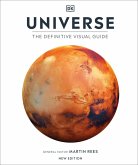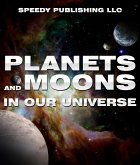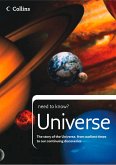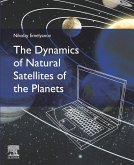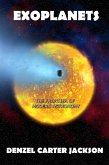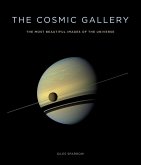As you all might know solar system is a gravitationally boundsystem. It consists of the sun and all the objects that orbit it.These objects might orbit the sun either directly or indirectly.The eight planets are the largest objects that orbit the sundirectly. Rests of them are significantly smaller objects such asdwarf planets, small solar system bodies etc. It is said that solarsystem was formed about 4.6 billion years ago. The reasonbehind such gigantic formation was gravitational collapse of aninterstellar molecular cloud that has the size even bigger thanour current solar system.Most amount of the system's mass is packed within the sunitself. A significant amount of remaining mass is contained inJupiter. Main eight planets are often studied in two groups,inner planets and outer planets. Inner planets are mercury,Venus, Earth and Mars. These planets are often referred asterrestrial planets since their primary elements are rock andmetals. Remaining outer planets are also referred as giantplanets since they are noticeably massive compared to innerplanets. Two largest among them that are Jupiter and Venusare known as gas giants since they are mainly formed withhydrogen and helium. Remaining two outermost planets areknown as ice giants (Uranus & Neptune). These ice giants areformed with elements with high melting points compared tohydrogen and helium. These elements are called ices such aswater, ammonia and methane. All planets possess their uniqueorbit that is almost circular. These orbits lie within a flat surfacethat is known as ecliptic.Along with these super large planets, there are smaller objectstoo. Between the orbits of mars and Jupiter, there lies a groupof objects such as terrestrial planets or rocks and metals, etc.This area or group is known as asteroid belt. It is noticeablethat our solar system does not end with the orbit of Neptune.Kuiper belt and scattered discs are located beyond Neptune'sorbit. They are also considered a part of our solar system.Kuiper belt and scattered discs are group of trans-Neptunianobjects. Most of them are formed with ices. Beyond kuiper belt,population of sednoids have been discover in near past.Together all these populations tend to hold more than tenthousand objects. These objects are large enough to hold theirown gravity field around them. Such objects are referred asdwarf planets. Asteroid Ceres and trans-Neptunian objects Plutoand Eris are known dwarf planets. It is noticeable that Plutowas considered a planet in the past, however, not any more.In these regions, other minor objects such as comets, centaursand interplanetary dust freely travel from on region to another.Six planets from main eight planets, four dwarf planets andmany minor objects are orbited by natural satellites that werefer as moon or moons. Almost every outer planer is encircledwith planetary rings made of dust and other objects. Venusand Jupiter have a clearly visible planetary ring where Uranusand Neptune have thinner one. In this book we will cover allthe basic concepts that will help you to understand vasttheories later on in dipper studies.
Dieser Download kann aus rechtlichen Gründen nur mit Rechnungsadresse in A, B, CY, CZ, D, DK, EW, E, FIN, F, GR, H, IRL, I, LT, L, LR, M, NL, PL, P, R, S, SLO, SK ausgeliefert werden.



